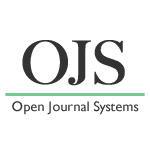Yesterday (24 Oct.) I
attended a brilliant one-day conference about Modern Platforms for the Publication of
Journals. Before all the important ideas I came across there sink into
oblivion, let me jot them down. I am doing this in the hope that I may use
these ideas later on, and that you will find them beneficial, too. As memories
fade into darkness soon, and I had no pen or pencil with me yesterday, I used
twitter for sharing and keeping the best ideas, and I will use my tweets as helping
hands in the act of recollection.
First and
foremost the conference focused on the journals managed by the publishing house
of the Hungarian Academy of Sciences, which publishing house is owned by
Kluwer. Now, Kluwer is a profit oriented Dutch enterprise, so let me share with
you my dissatisfaction with the fact that the Hungarian Academy of Sciences as
a publisher does not have financial and scientific freedom but is dependent
on a private organization. Anyways, this is what life is, let us move on
towards more productive ideas. Or no, let me play on a bitter note, the
presentation was about what value a publisher adds to the process of
publishing, and I am quite convinced that the work flow presented is needed and
is necessary. On the other hand, however, during the QA session the answer to
the question about payment for the authors and peer reviewers was just
shocking: 1-3-month access to the journal free of charge. Please!
 The
conference implicitly and the speakers explicitly were meditating about the
Open Journal Systems (OJS from now on), which is an open access and open source platform
for the management of submissions to and publication of a journal. The wikipedia article on OJS is rather informative. All the
speakers agreed on its usefulness from different angles. Some speakers shared
their experience as far as impressions were concerned: both authors and
reviewers found OJS as something that added value and significance to the
journal, maybe the journal itself seemed more professional. Others mentioned
that the management of submissions is awesome, it is very difficult to make
mistakes, submissions do not disappear, every step of the editorial process can
be tracked. Another speaker (Andrea Horváth) claimed that since they had started
using the OJS the number of submissions doubled, tripled. The downside of OJS
is the learning curve, which is steep and occasionally the editors needed some
help when facing the then seemingly irresolvable problems.
The
conference implicitly and the speakers explicitly were meditating about the
Open Journal Systems (OJS from now on), which is an open access and open source platform
for the management of submissions to and publication of a journal. The wikipedia article on OJS is rather informative. All the
speakers agreed on its usefulness from different angles. Some speakers shared
their experience as far as impressions were concerned: both authors and
reviewers found OJS as something that added value and significance to the
journal, maybe the journal itself seemed more professional. Others mentioned
that the management of submissions is awesome, it is very difficult to make
mistakes, submissions do not disappear, every step of the editorial process can
be tracked. Another speaker (Andrea Horváth) claimed that since they had started
using the OJS the number of submissions doubled, tripled. The downside of OJS
is the learning curve, which is steep and occasionally the editors needed some
help when facing the then seemingly irresolvable problems.
Another advantage
of OJS is its flexibility and compatibility with other applications, services. It
is rather beneficial that OJS can seamlessly work with DOI (Erika Bilicsi). A Digital Object Identifier (aka
DOI) is necessary for the sake of relating each paper of the journal to an, say,
ID card, i.e. in the cyberspace with a DOI that will provide an “everlasting” identity
to the digital object. Metadata, such as a URL, are linked to the object, and while
the metadata may change, though should be updated, the DOI does not. For more details visit the DOI webpage and the relevant Wikipedia article.
Another
speaker (László
Peregovits) argued that
an ORCID is very important, too, and it works nicely with OJS, too. If the
DOI is used to identify a digital object, such as a journal article, the ORCID is the identifier of the researcher, author. The ORCID can be used when
submitting an article, is useful to link academic activity to a researcher.
This helps visibility for the author and visibility for the products of
research like research articles. If you are interested in more details about ORCID check out the ORCID Wikipedia entry. Furthermore the same speaker claimed that they
only allow authors with an ORCID to submit manuscripts. The creation of an
account at orcid.org, and thus obtaining an ORCID is not a big issue, it
took me 2 minutes, surely adding publications etc. is the more laborious part.
This seems to be a worthy project, so I’ll sooner or later provide my data there
as well.
During the
conference I also found that the people at HAS Library are really nice and
helpful. This is rather reassuring on two accounts. First, because I am a member
of the editorial board of a new journal, which is run on OJS. I can tell that
the learning curve is steep and one needs help occasionally. Secondly, because
if I happen to try to convince PPCU to use this fantastic platform for our
digital journals, then it is good to know that there are helpful people out
there who can and are willing to help.
All in all,
the conference was absolutely inspiring. I learned a lot including the
significance of DOI, ORCID, OJS and some trends in terms of journals,
platforms and publication. I hope I may make use of this knowledge in the near
future especially in ways that foster Open Access publications, after all this is Open Access Week.


No comments:
Post a Comment